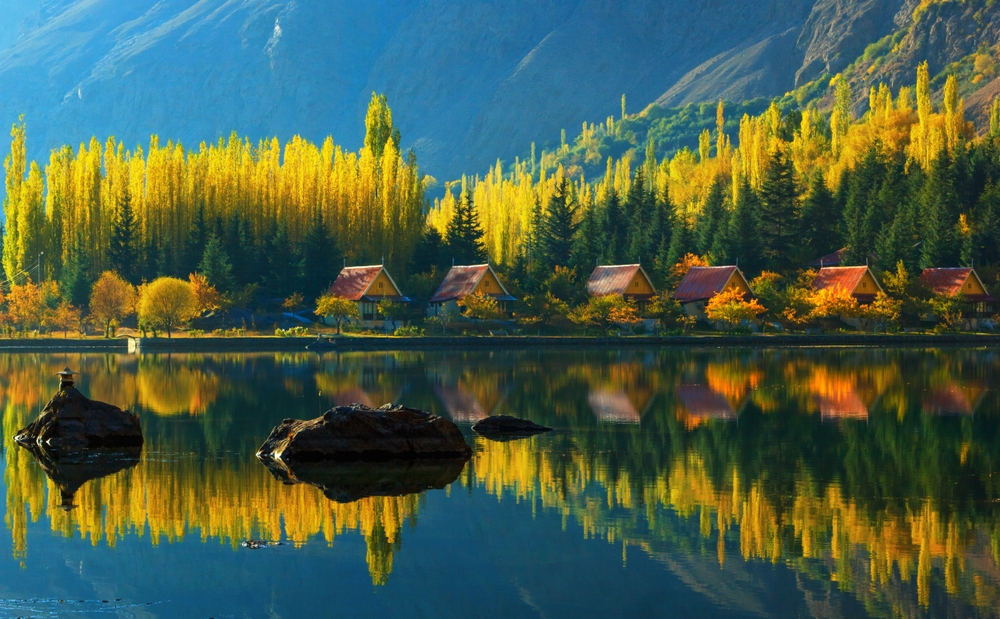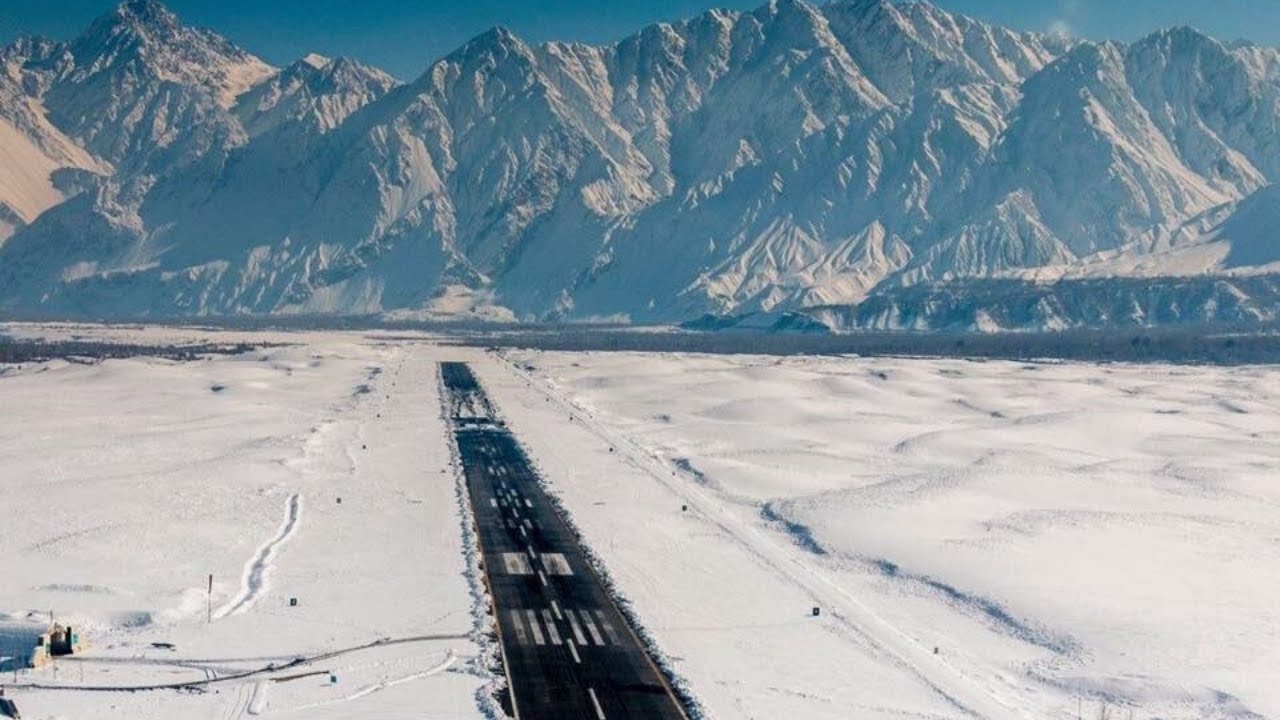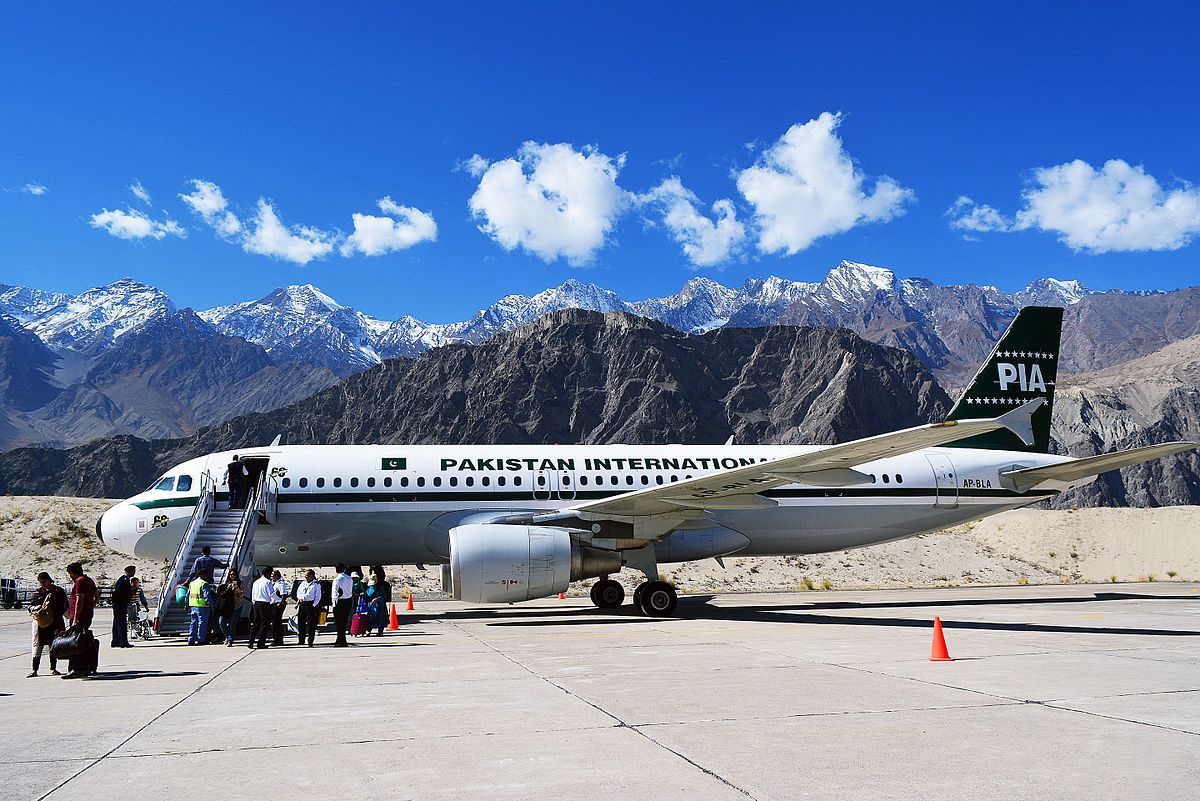Whenever I sit down with travelers planning a trip to Skardu, one of the first questions I hear is, “What’s the weather like?” Over the years, We have learned to adapt to dramatic temperature shifts and changing seasons. By 2025, we also have more reliable weather forecasting technology, but it’s still crucial to keep in mind that nature can be unpredictable—especially in mountainous areas. Let’s walk through what you can expect in each season and how best to prepare.
1. Spring (march to may)
Weather Overview:
Springtime in Skardu is a breath of fresh air—literally. The snow begins to melt in the lower altitudes, revealing lush green valleys and blooming apricot and cherry blossoms. Average daytime temperatures hover around 15–20°C (59–68°F), while nighttime temperatures can drop to around 5°C (41°F) or slightly lower.
Why Visit in Spring:
-
- Blossom Season: The entire region transforms into a sea of pink and white blossoms. This is a photographer’s paradise.
-
- Mild Treks: Lower-elevation trails become accessible, offering scenic routes without the intense heat of summer or the snow-clogged passes of winter.
Packing Tips:
-
- Bring layers: light jackets for daytime, and something warmer for evenings.
-
- Waterproof shoes are beneficial, as snowmelt can make trails slippery.

2. Summer (June to August)
Weather Overview:
Summers in Skardu are pleasantly warm, with daytime highs typically between 25°C and 30°C (77–86°F). Nights remain cool, often dropping to around 15°C (59°F). Occasional monsoon rains may sweep through in late July or early August, but these showers are usually short-lived.
Why Visit in Summer:
-
- Peak Tourist Season: Outdoor activities, such as trekking, mountaineering, and camping, are in full swing.
-
- Festivals and Culture: You’ll find local festivals celebrating the region’s history, music, and cuisine.
-
- Day Trips: Access to places like Deosai National Park is generally easier, as snow has receded.
Packing Tips:
-
- Include a rain jacket or poncho just in case.
-
- Sunscreen and sunglasses are essential, given the strong high-altitude sun.

3.AUTUMN (SEPTEMBER TO NOVEMBER)
Weather Overview:
Autumn in Skardu might just be my favorite time of year. Daytime temperatures are moderate, around 15–20°C (59–68°F), while nights can get chilly, dropping close to 0°C (32°F). Skies tend to be clear, providing stunning views of the mountains.
Why Visit in Autumn:
-
- Fall Foliage: The trees turn vibrant shades of orange, red, and gold, especially in places like Shigar and Khaplu.
-
- Fewer Crowds: The summer rush subsides, making it easier to find accommodations and explore popular sites without the crowds.
-
- Photography: The golden-hued landscapes against the crisp blue skies are truly breathtaking.
Packing Tips:
-
- Warm layers for evenings.
-
- Light gloves or a scarf if you plan on staying out late for stargazing.

4. Winter (December to February)
Weather Overview:
Winter in Skardu is a wonderland of snow-capped peaks and serene landscapes. Daytime highs can hover around 5°C (41°F), but nights can drop well below freezing—sometimes as low as –10°C (14°F). Expect roads to remote areas to be occasionally closed due to heavy snowfall.
Why Visit in Winter:
-
- Snow-Covered Peaks: If you’re a fan of winter scenery, you’ll be thrilled by the pristine beauty.
-
- Off-Season Quiet: With fewer travelers, you can enjoy a peaceful retreat and get to know local life at a slower pace.
-
- Winter Festivals: Traditional winter gatherings in local homes, featuring story-telling and hearty Balti meals.
Packing Tips:
-
- Heavy winter gear is essential: insulated jackets, thermal layers, gloves, and thick socks.
-
- Invest in snow boots or shoes with good traction.

5. Climate Changes and Environmental Notes
While Skardu’s climate patterns remain somewhat predictable, global climate change has led to shifts in weather. Glaciers that feed the Indus River have been receding faster than they used to, and monsoon patterns are sometimes heavier than anticipated. Local authorities and NGOs are working on conservation projects and promoting sustainable tourism to preserve Skardu’s natural beauty.
6. General Weather & Altitude Tips
-
- Altitude Considerations: Skardu sits at roughly 2,200 meters (7,218 ft). Even if you’re fit, altitude sickness can occur. Acclimatize gradually and stay hydrated.
-
- Sun Protection: The sun’s UV rays are stronger at higher altitudes. Don’t forget SPF 30+ sunscreen, sunglasses, and a hat.
-
- Stay Updated: By 2025, weather forecasting apps and local tourism boards offer more accurate short-term weather updates. However, conditions can change quickly, so always double-check with local guides.
7. Local Insights for Each Season
-
- Spring Hiking: Trails around Skardu Fort, Satpara Lake, or even the beginnings of the trek towards K2 Base Camp can be less crowded than in peak summer.
-
- Summer Cultural Immersion: This is the perfect time to attend local fairs and discover Balti music and dance. Some community-driven events open to tourists include folk music nights and “apricot festivals.”
-
- Autumn Harvest: If you’re around Shigar or Khaplu, you can witness locals harvesting apples and apricots. Don’t miss a chance to try fresh apple juice!
-
- Winter Photography: Clear, crisp air often means excellent visibility for capturing the jagged outlines of the Karakoram Range. Snow treks to nearby villages can also be very scenic—just be sure to go with a guide.
8. Conclusion
Skardu’s weather is as diverse as its landscapes—from the blooming valleys in spring to the frigid, snow-draped peaks in winter. Each season offers a unique glimpse into the region’s soul, shaped by centuries of cultural traditions and nature’s raw power. Whether you want to trek through lush summer meadows, marvel at autumn’s kaleidoscopic foliage, or cozy up in a mountain lodge during winter snows, Skardu has a season that will captivate you.
Ultimately, the “best time” to visit depends on your interests. If you’re here for mountaineering, aim for late summer for stable weather. For photographers chasing blossoms or fall colors, spring and autumn are unbeatable. And if you crave solitude and the magic of snowfall, winter is your best bet. Whatever season you choose, come with an open heart and a readiness to embrace the dramatic climate shifts that have shaped Skardu’s identity for generations.
Here in 2025, we cherish these seasonal patterns even more as we watch them evolve. Skardu’s beauty may be timeless, but its weather and environment remind us to journey respectfully and responsibly—so future travelers can enjoy the same wonders that greet us today.




1 Comment
eureka math - July 16, 2025
Pretty section of content. I just stumbled upon your website and in accession capital to assert that I get actually enjoyed account your blog posts.
Anyway I’ll be subscribing to your augment and even I achievement you access consistently fast.